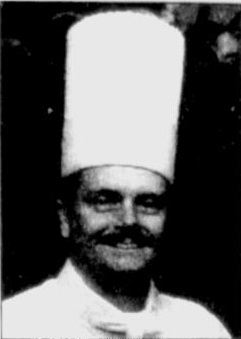White House Executive Chef
Head chef of the White House
The White House Executive Chef is the head chef responsible for the planning, preparation, and presentation of all meals and events at the White House, the official residence and workplace of the President of the United States. The position is one of great prestige and responsibility, requiring a chef who can cater to the diverse tastes of the First Family, as well as manage the culinary needs of state dinners and other official functions.
History[edit | edit source]
The role of the White House Executive Chef has evolved significantly since the early days of the presidency. Initially, the position was filled by domestic staff or hired cooks, but as the demands of the presidency grew, so did the need for a professional chef. The first official White House chef was appointed in the early 20th century, and since then, the position has been held by a series of distinguished culinary professionals.
Responsibilities[edit | edit source]
The White House Executive Chef is responsible for overseeing the preparation of all meals served in the White House, including daily meals for the First Family, as well as formal state dinners and other official events. The chef must be adept at creating menus that reflect the tastes and dietary preferences of the First Family, while also accommodating the needs of guests from around the world.
In addition to cooking, the Executive Chef manages the kitchen staff, plans menus, sources ingredients, and ensures that all food is prepared to the highest standards of quality and safety. The chef also collaborates with the White House Executive Pastry Chef to create desserts and other baked goods for events.
Notable Executive Chefs[edit | edit source]
Several chefs have left a lasting impact on the White House kitchen. Notable among them is Cristeta Comerford, who became the first woman and first person of Asian descent to hold the position when she was appointed in 2005. Comerford is known for her innovative approach to cooking and her ability to blend diverse culinary traditions.
Another influential figure was René Verdon, who served as Executive Chef from 1961 to 1965 under President John F. Kennedy. Verdon was instrumental in introducing French cuisine to the White House and elevating the standard of culinary excellence.
Henry Haller served as Executive Chef from 1966 to 1987, working under five presidents. Haller was known for his versatility and ability to adapt to the changing tastes of each administration.
Jon Hill was another notable chef who contributed to the White House's culinary legacy during his tenure in the late 1980s.
The Kitchen[edit | edit source]
The White House kitchen is equipped with state-of-the-art appliances and facilities to accommodate the preparation of meals for large numbers of guests. The kitchen staff, led by the Executive Chef, is capable of serving elaborate multi-course meals for state dinners, as well as more casual fare for family meals.
Related pages[edit | edit source]
Search WikiMD
Ad.Tired of being Overweight? Try W8MD's NYC physician weight loss.
Semaglutide (Ozempic / Wegovy and Tirzepatide (Mounjaro / Zepbound) available. Call 718 946 5500.
Advertise on WikiMD
|
WikiMD's Wellness Encyclopedia |
| Let Food Be Thy Medicine Medicine Thy Food - Hippocrates |
Translate this page: - East Asian
中文,
日本,
한국어,
South Asian
हिन्दी,
தமிழ்,
తెలుగు,
Urdu,
ಕನ್ನಡ,
Southeast Asian
Indonesian,
Vietnamese,
Thai,
မြန်မာဘာသာ,
বাংলা
European
español,
Deutsch,
français,
Greek,
português do Brasil,
polski,
română,
русский,
Nederlands,
norsk,
svenska,
suomi,
Italian
Middle Eastern & African
عربى,
Turkish,
Persian,
Hebrew,
Afrikaans,
isiZulu,
Kiswahili,
Other
Bulgarian,
Hungarian,
Czech,
Swedish,
മലയാളം,
मराठी,
ਪੰਜਾਬੀ,
ગુજરાતી,
Portuguese,
Ukrainian
Medical Disclaimer: WikiMD is not a substitute for professional medical advice. The information on WikiMD is provided as an information resource only, may be incorrect, outdated or misleading, and is not to be used or relied on for any diagnostic or treatment purposes. Please consult your health care provider before making any healthcare decisions or for guidance about a specific medical condition. WikiMD expressly disclaims responsibility, and shall have no liability, for any damages, loss, injury, or liability whatsoever suffered as a result of your reliance on the information contained in this site. By visiting this site you agree to the foregoing terms and conditions, which may from time to time be changed or supplemented by WikiMD. If you do not agree to the foregoing terms and conditions, you should not enter or use this site. See full disclaimer.
Credits:Most images are courtesy of Wikimedia commons, and templates, categories Wikipedia, licensed under CC BY SA or similar.
Contributors: Prab R. Tumpati, MD





